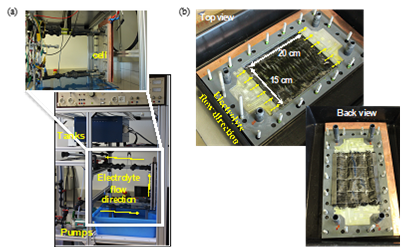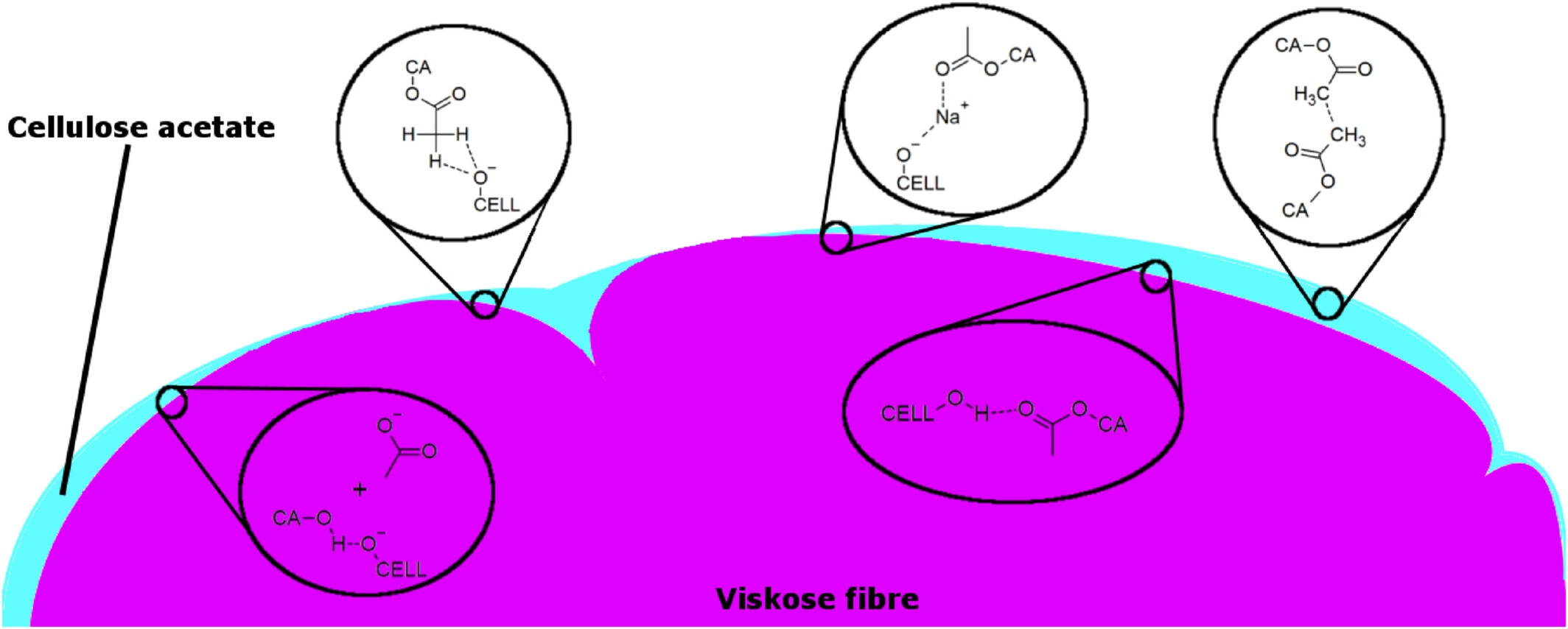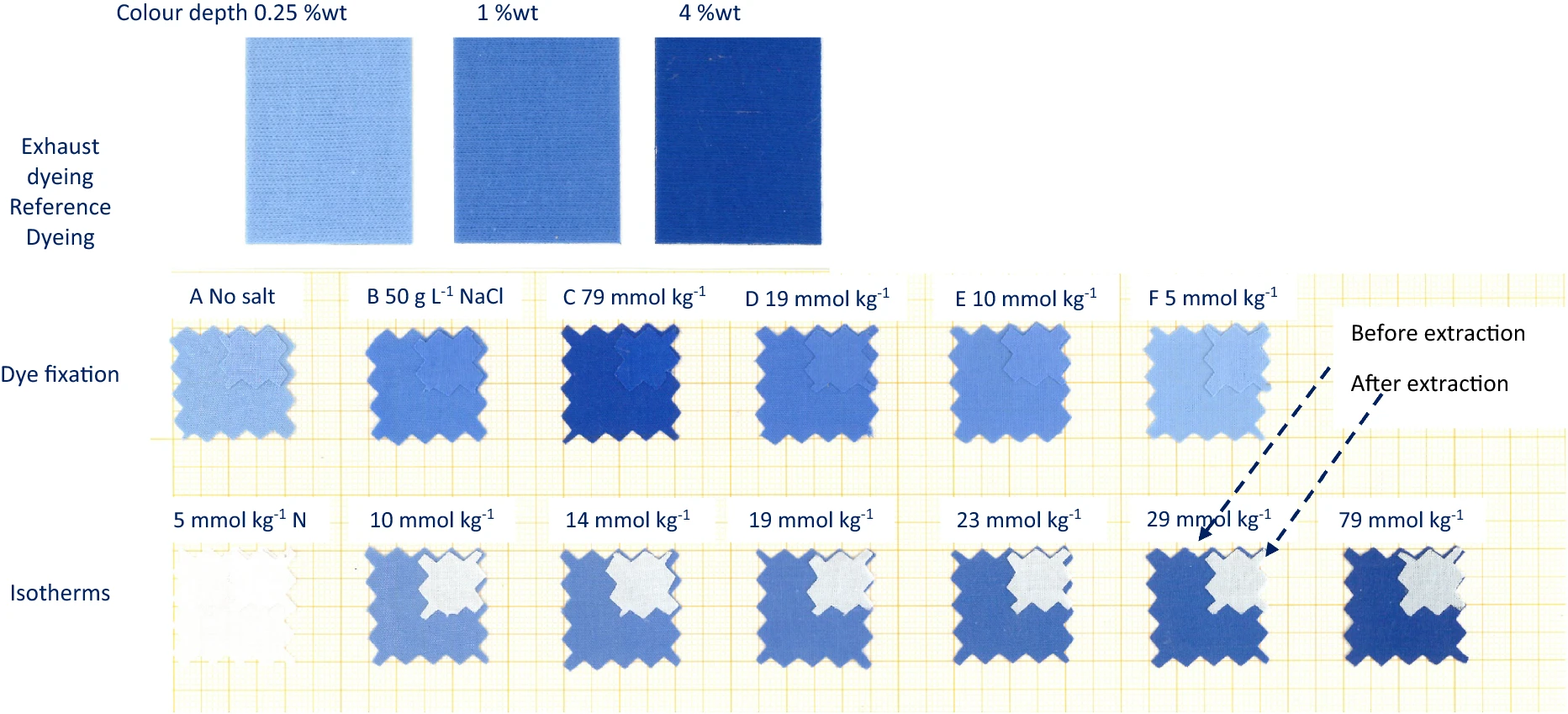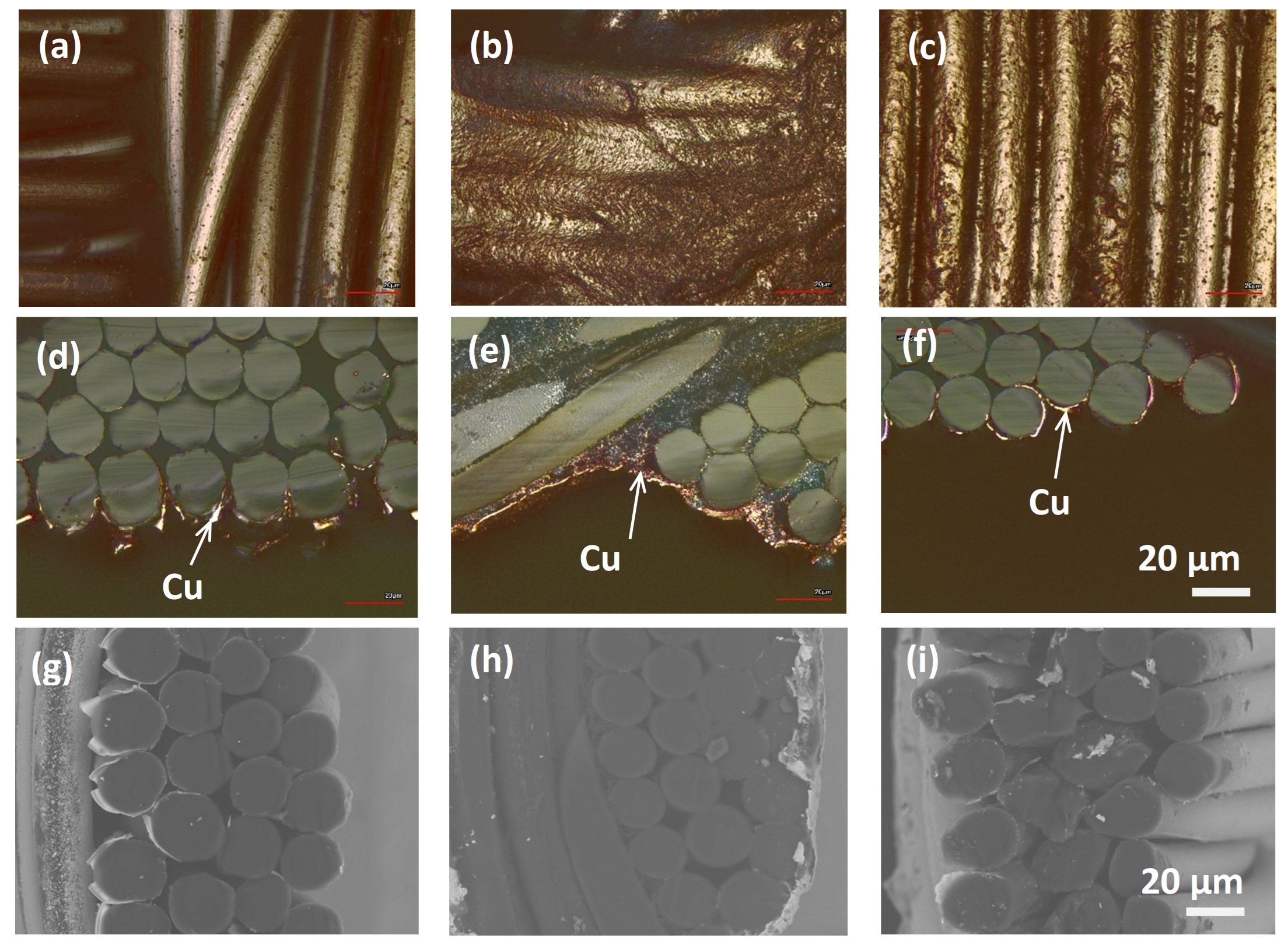Static dissipative viscose fibres are made accessible by deposition of copper for Smart Textiles and Smart Home applications.
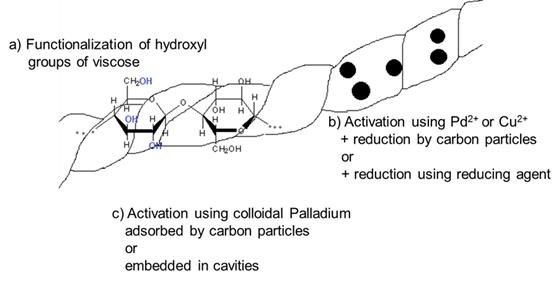 Although a large number of conductive materials such as metals or metal fibres are already available in the market, there is still great interest in the development of new electrically conductive substrates for applications in the textile sector. Constantly increasing quality demands claim, above all, wearer comfort and wash fastness/ long-life time.
Although a large number of conductive materials such as metals or metal fibres are already available in the market, there is still great interest in the development of new electrically conductive substrates for applications in the textile sector. Constantly increasing quality demands claim, above all, wearer comfort and wash fastness/ long-life time.
Figure 1: Possibilities for the subsequent application of conductive layers on viscose fibres
The incorporation of conductive particles into the spinning dope provides interesting approaches to realizing this improvement. Therefore, Kelheim Fibres GmbH developed a static dissipative viscose fibre called Electra. This functionalized black fibre maintains the typical properties of a viscose fibre as the electrically conductive additives are incorporated into the fibre’s core. However, this intrinsically anchored conductivity of the fibres or yarns produces therefrom is limited to a kOhm*cm range. High conductivity is usually not achieved.
The sole incorporation of carbon black in the fibres core doesn’t seem to be sufficient for the realization of high conductivity of the viscose fibres. To increase the conductivity, the chemical metallization of the viscose fibres has been investigated by means of copper. This requires a specific pre-treatment of the viscose fibre to activate the fibre surface, which can be achieved in various ways (cf. Figure 1).
The pretreatment becomes necessary in order to firmly adhere the actual conductive layer to the surface.
The carbon incorporated into the viscose fibre is insufficient to reduce copper ions and to create seeds for subsequent copper plating on the viscose fibre surface. In contrast, activation with a palladium colloid has positive effects on the copper deposition. In favour of the fibre strength, the carbon black content for the fibre yarn is reduced to about 30 %.
To activate the chemical deposition, catalytic active noble metal cores are applied on the surface which reduce the inhibition of metal reduction in electrolytes and activate the plating process. The following copper deposition was investigated using common electroless plating processes for plating on plastics.
The residence time in the activator has no significant influence on the later measured electrical resistance. On the other hand causes an increased residence time in the copper bath, the deposition of a thicker layer. Thus leads to a reduction in electrical resistance, but after a certain period of time, it runs to a limit that cannot be further reduced.
After pre-tests show that the carbon integrated in the viscose is not able to reduce the copper ions to pure metal, the influence of the carbon black content of the viscose on the formation of the copper layer using an electroless plating electrolyte has been investigated in further experiments. Independently of the rotation of the fibre yarn, the copper plating is incomplete with the same deposition parameters on the soot-free fibre yarn, as microscopic investigations using light and scanning electron microscopy on the metallized samples show (cf. Figure 2).
Figure 2: SEM images of a metallized viscose fibre yarn with soot (left), without soot (right)
Similar results were found in experiments using viscose with very low carbon content. Again, the copper layer on the fibre surface was incomplete.
The reason for this is seen in an influence of carbon integration in the viscose fibre on the activation step. In order to determine the limiting concentration of soot in the viscose, in which a complete copper layer is formed, the experiments are continued accordingly.
The results achieved are promising and will be transferred to a semi-continuous laboratory plant in the next step. If continuous copper deposition succeeds, a wide range of applications is available for them. Applications and the associated requirements for heatable textiles, textile electrodes and sensory applications are already being discussed with companies.
Strategic project 2-010 Sensor textiles adaptive textiles
Project Partners:
The COMET-Project TCCV Project no. 860474 is funded within the context of COMET – Competence Centers for Excellent Technologies by the Austrian Ministry for Transport, Innovation and Technology (BMVIT), the Federal Ministry for Digital and Economic Affairs (BMWFW), and the federal states of Vienna, Tyrol and Vorarlberg. The programme is conducted by the Austrian Research Promotion Agency (FFG).







